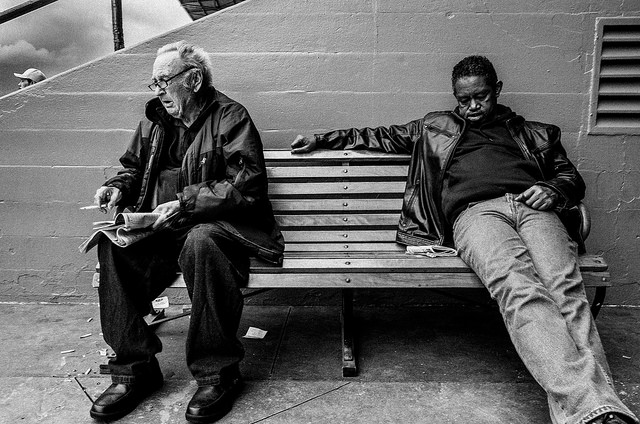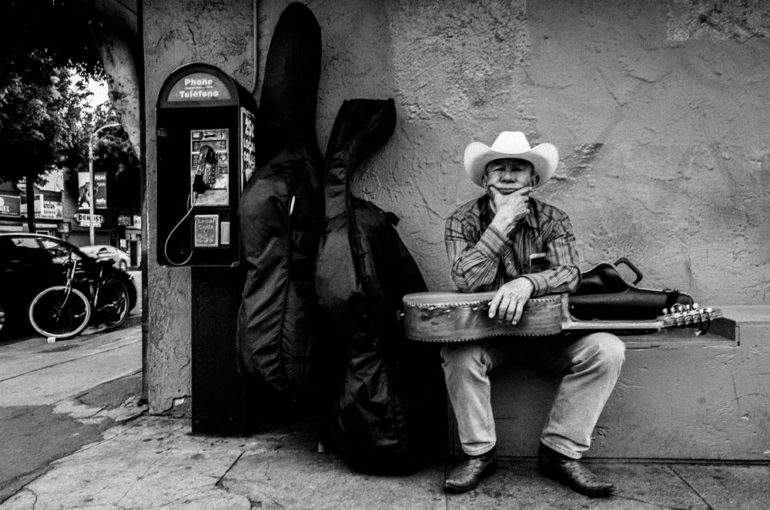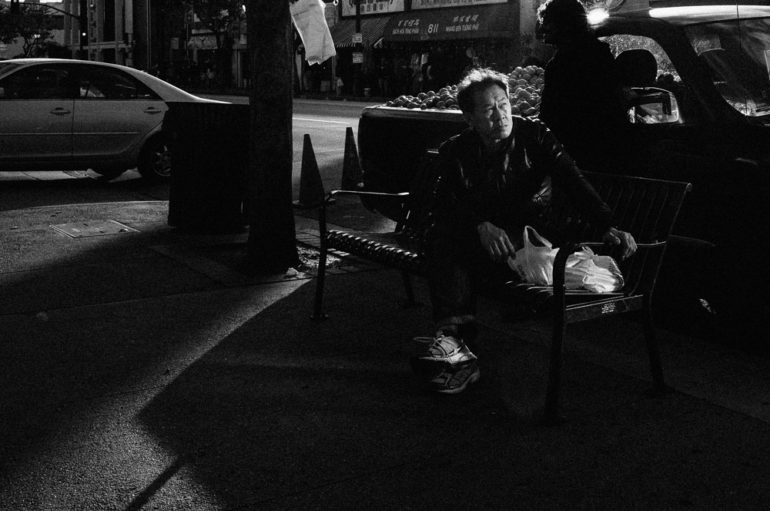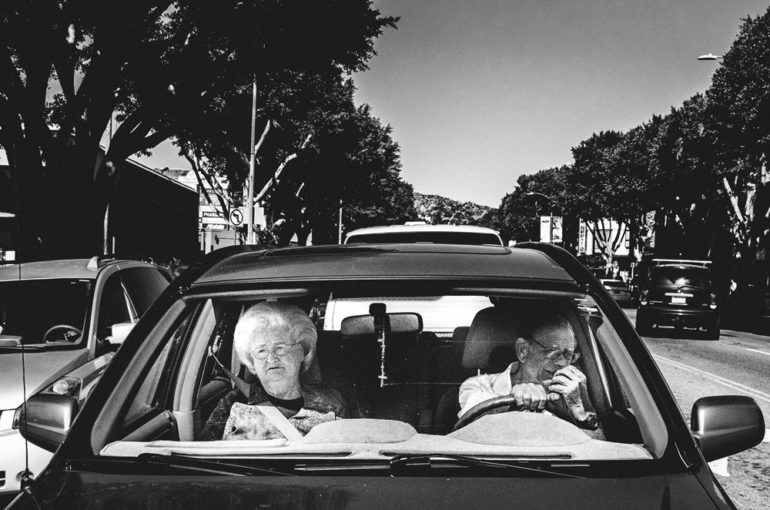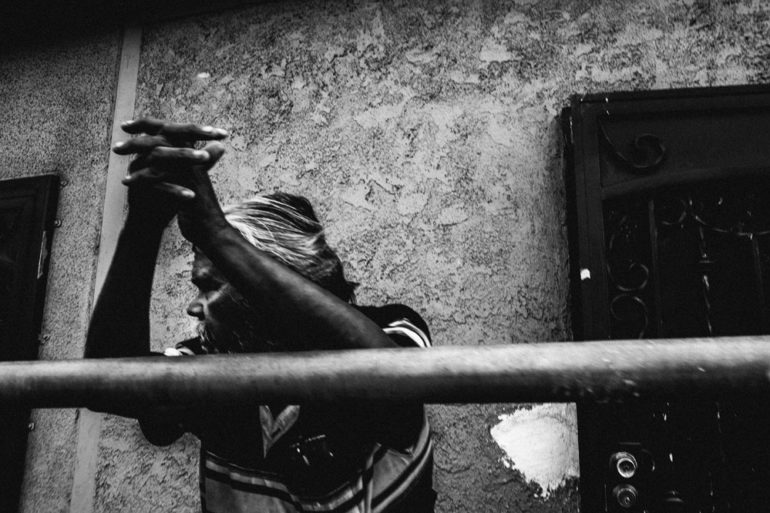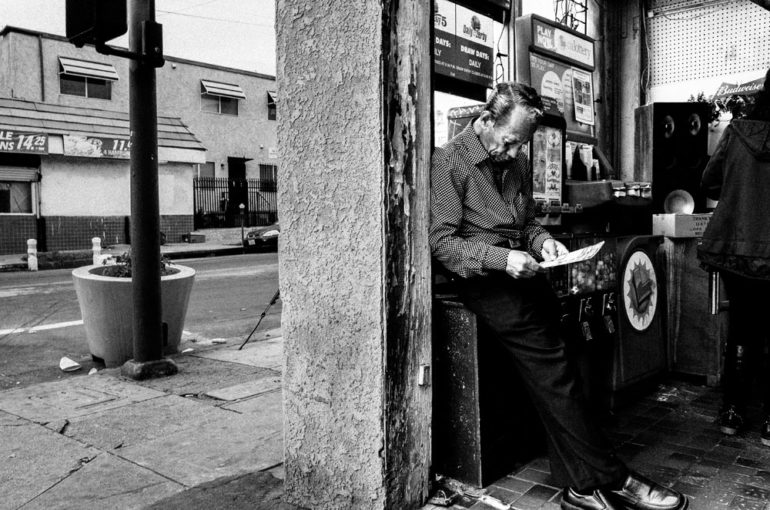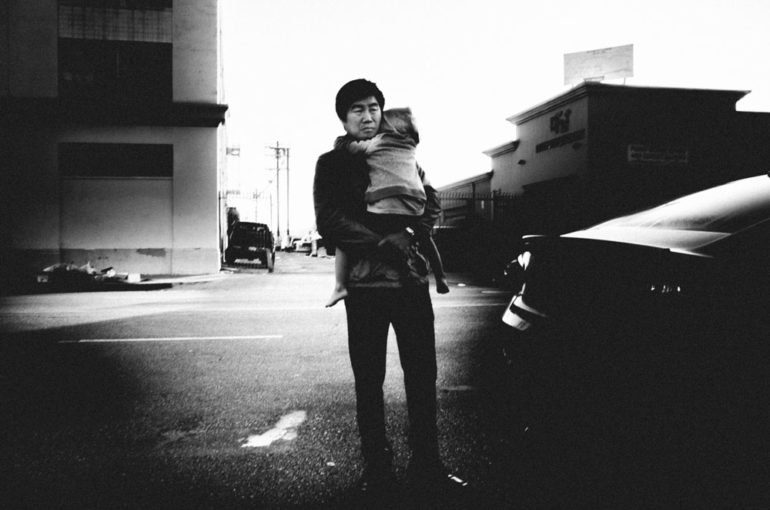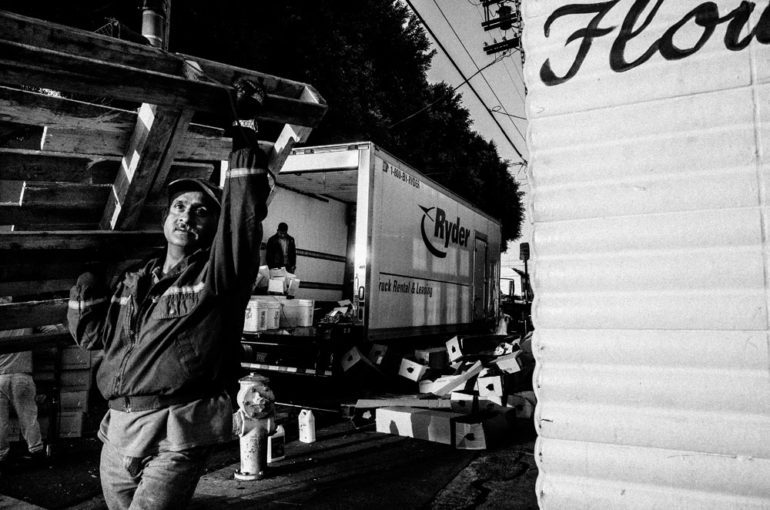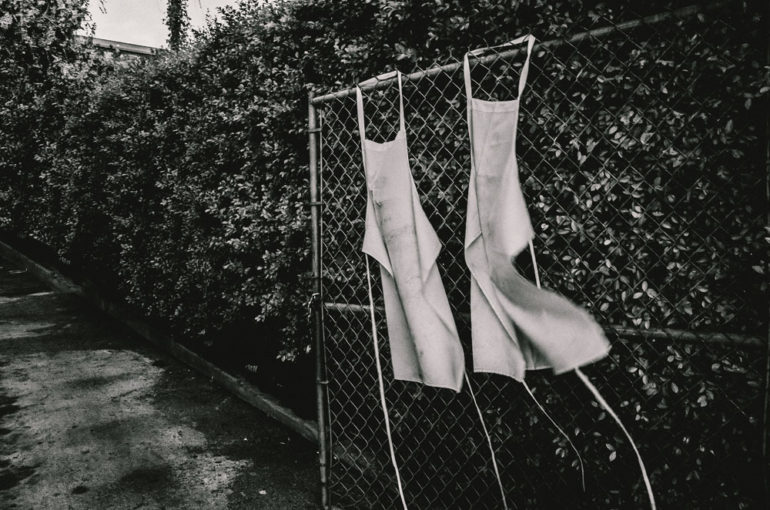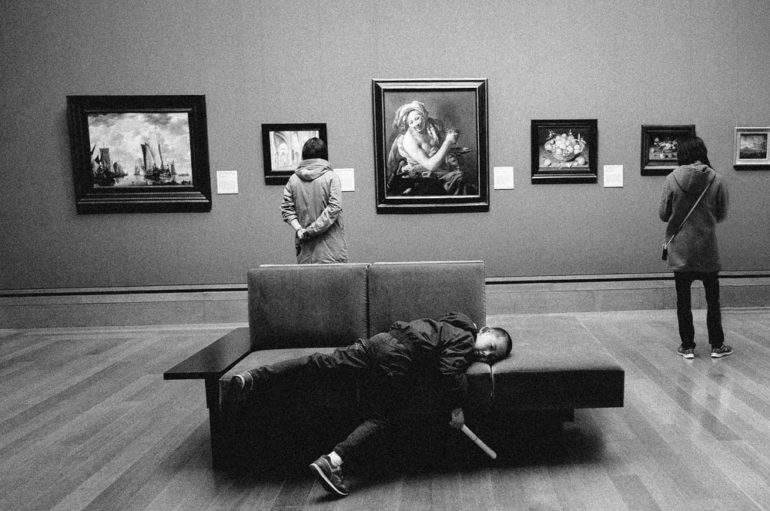Last Updated on 11/02/2017 by Chris Gampat
Rob Krauss explains the ease and difficulty of street photography.
I am a Los Angeles based Street and Documentary photographer. I have been making images for over 23 years. I use a Sony a7ii, Ricoh GR and Fujifilm X100F. My aim is to capture emotion in fleeting moments, so as to connect with the subject I am shooting and thus provide the viewers of my images with that connection as well. I have traveled to many cities in the world to shoot Street Photography including New York, Tokyo, Mumbai, Tel Aviv, Paris, London and Mexico City. I shoot primarily with the Ricoh GR, in RAW and converting to Black and White in Lightroom.
Street photography is in an interesting place in its history. More people than ever are able to participate, but that has also meant the bar for a good photo is much higher. There are too many street photos of people just walking out there and I think it is the duty of all us who really want to call ourselves Street Photographers to give more than that. I am striving every time I go out and shoot to do more than the clichés, more than the shadow play, more than the geometry. I am pushing myself to see deeper and capture the nexus of the emotional and technically perfect moment in my photos.
Why did you get into photography?
Photography for me was always a stop gap, something to hold against the tides of time and to try and hold on to whatever moments I could. I learned initially how to make images from my Father, also a hobbyist photographer, while growing up in Syracuse, NY. I was obsessed with loss as a child, convinced that someone I loved was going to die or just holding on too tightly to old toys, I couldn’t let things go. Photography was a healthier way to hold on to those things and people by immortalizing them on film.That drove me to capture as much beauty in the world as I could with whatever little time I might have. In 2011 I became much more serious about photography after moving to Los Angeles and working on the HBO show “Luck” with Unit Photographer Gusmano Cesaretti. His easy approach to his work was a joy to watch and a joy to know. When he put his lens in front of you he captured your image with love. From seeing his work I knew that’s what I wanted to do as well, capture moments and connect in a loving way with subjects through my lens. Every time I go out and shoot I am striving to get there in my work. I don’t believe I am where I need to be yet, but no artist should. We should be continuing to strive and push and create in this world for nothing will ever be that perfect moment, but we can get really damn close.
What photographers are your biggest influences?
I am very influenced by Eric Kim, because of how he interweaves life and philosophy into his work. Richard Kalvar is also a big influence because of the playful qualities he is able to find in even serious moments, and also Julia Dean and Gusmano Cesaretti, they have personally taught me many important things about editing and making images that connect with a viewer on a deeper level. I’ve also been influence by French impressionist painter Gustave Caillebotte and his urban impressionist paintings in 19th Century Paris.
How long have you been shooting?
I have been shooting film for the past 23 years and started seriously in digital photography in 2011.
Why is photography and shooting so important to you?
Photography is important to me because it brings a sense of permanence to life. If you can capture a great moment, commit to photo paper or even to a file, then that moment is saved forever. It’s also a way to connect with people that I would normally never meet. Through photography I have made some great friendships and gotten to explore some truly unique places in the world.
Do you feel that you’re more of a creator or a documenter? Why?
I am definitely a documenter. There are so many interesting people and places on Earth that I don’t see the need to imagine them in my work. I feel like a moment is much more compelling when it’s “real.” The connection that can be forged from a real moment in an image is more interesting to me than one that is created.
What’s typically going through your mind when you create images? Tell us about your processes both mentally and mechanically?
When I start walking the streets I usually start by making some architectural photos, something to warm up, get in the habit of framing and clicking the shutter. I then look people passing by in the eyes to try and find a moment occurring naturally. When I do, I approach them carefully, so as not to intrude, but do stay close and try and evaluate the scene. I usually have a frame in mind as I am walking up and I position myself wherever I need to be to get that, though doing so without drawing attention to myself.
Want to walk us through your processing techniques?
I bring everything into Lightroom and use Eric Kim’s Free templates for films I found on his website. They are a great starting point. I primarily use his Kodak Tri-X 1600 setting and then adjust the contrast or exposure from there.
Tell us about the project that you’re pitching, or your portfolio
My project, Los Angeles Moments, is a collection of the experiences I have had exploring the city of Los Angeles and meeting as many people as I can. Los Angeles is a dynamic and deeply rich city, full of interesting places and people, which is why my project is a lifelong one. As long as I can walk and shoot, there will always be something more to discover and add to this project.
What made you want to get into your genre?
It’s the ease and the difficulty. The ease of being able to go out and shoot whenever I like and wherever I am, and the intense difficulty to make beautiful and arresting shots. It’s a hard genre to shoot in, to be really good in, as there are so many street photos being produced now, it takes an especially strong image to stand out from the crowd.
Tell us a bit about the gear that you use and how you feel it helps you achieve your creative vision
I love my Ricoh GR. The lens and sensor capture images a little dirty and I like how imperfect they come out. The Fujifilm X100F is a great travel camera and can autofocus super fast but in some of the images, they are just too sharp. I think the imperfections of the GR lend to its style and make my photos better, in my opinion. I always want my images to feel real and I think that the GR is a major part in achieving that. In addition to that, both the X100F and GR has near silent shutters, which really help in capturing real moments candidly.
What motivates you to shoot?
That there are a million different stories happening in Los Angeles every moment, and I may get to be a part of one.
All images by Rob Krauss


